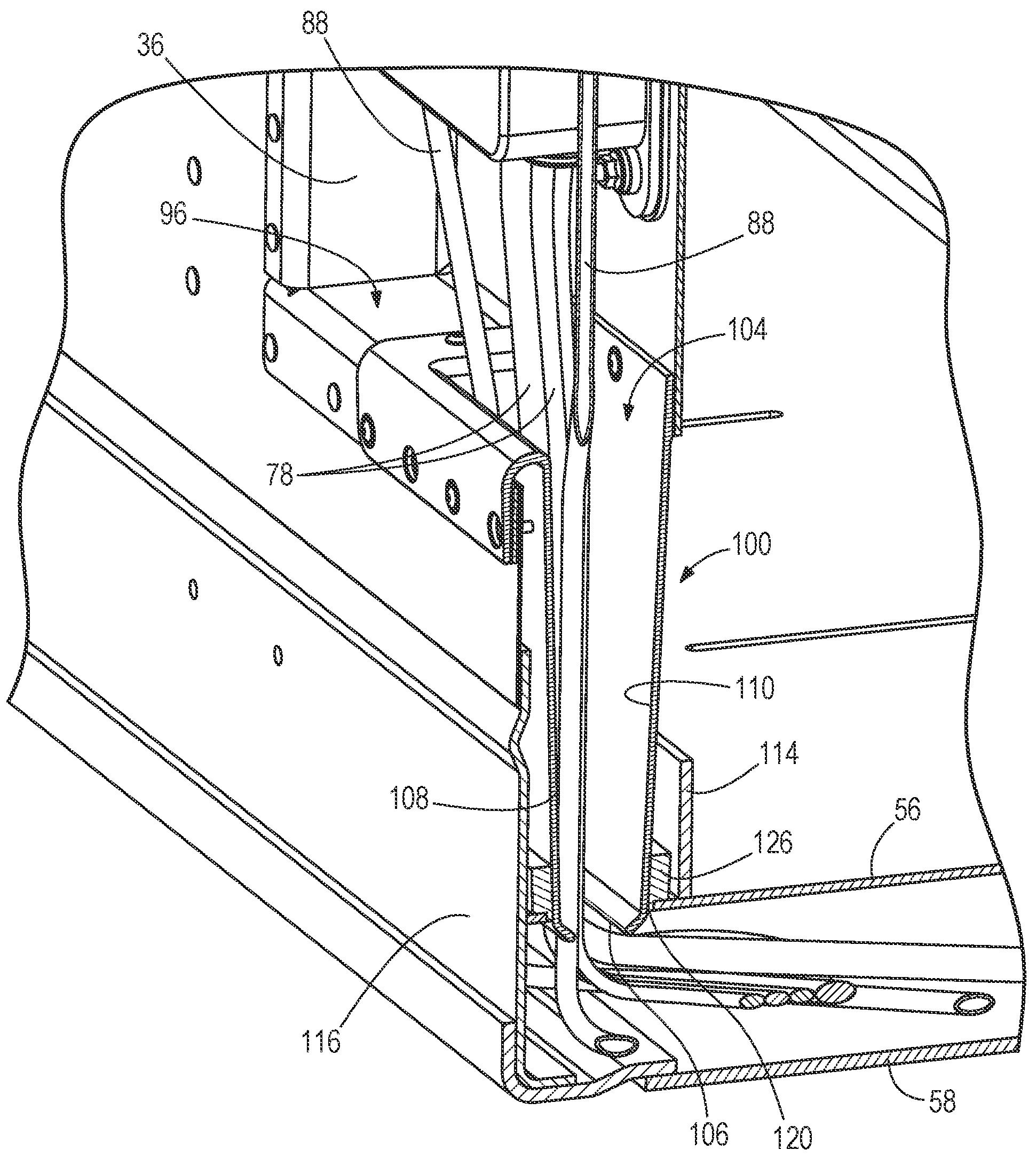Seaboard has filed a patent for a cargo trailer design that includes a recessed cavity and a raceway for utility line connectors. The connectors establish connections between the tractor and the trailer’s utility components, while the raceway provides a sealed tunnel for the utility lines. This design aims to improve the organization and functionality of utility connections in cargo trailers. GlobalData’s report on Seaboard gives a 360-degree view of the company including its patenting strategy. Buy the report here.
According to GlobalData, Seaboard's grant share as of June 2023 was 1%. Grant share is based on the ratio of number of grants to total number of patents.
Cargo trailer with recessed cavity for utility line connectors

A recently filed patent (Publication Number: US20230174168A1) describes a cargo trailer with innovative features for utility line connections. The cargo trailer includes a front wall that faces the rear of a tractor when the trailer is attached to it. At the forward side of the front wall, there is a recessed cavity that houses a series of utility line connectors. These connectors establish connections between utility sources in the tractor and utility components in the trailer. The utility line connectors are positioned vertically above the bottom wall of the recessed cavity. A raceway is also present, which has an upper end on the bottom wall and a lower end below the cargo area. This raceway forms an interior tunnel that securely holds multiple utility lines connected to the utility line connectors, ensuring they are sealed off from the cargo area.
The patent also mentions various types of utility line connectors that can be included in the cargo trailer. These connectors may consist of air and electrical connectors, gladhand connectors coupled to the trailer's brakes, or a multi-pin electrical connector linked to the trailer's lamps. The raceway, which houses the utility lines, is entirely closed along its length and is made of an integral molded plastic construction. It is sealed to the bottom wall of the recessed cavity using a sealing flange, which is further secured with a foam gasket. The lower end of the raceway is sealed to an opening in the upper coupler plate of the trailer's coupler, which is positioned at the underside of the cargo trailer adjacent to the front wall. This sealing is also achieved using a foam gasket. Additionally, the opening in the upper coupler plate is surrounded by a dam that extends upwardly from the plate and is sealed to it.
Overall, this patent presents a cargo trailer design that incorporates a recessed cavity and a raceway for utility line connections. The use of a sealed tunnel ensures that the utility lines are protected and separated from the cargo area. The inclusion of various utility line connectors allows for the efficient connection of different utility sources and components. The use of an integral molded plastic construction for the raceway enhances durability and reliability. These features contribute to the overall functionality and performance of the cargo trailer.
To know more about GlobalData’s detailed insights on Seaboard, buy the report here.
Data Insights
From

The gold standard of business intelligence.
Blending expert knowledge with cutting-edge technology, GlobalData’s unrivalled proprietary data will enable you to decode what’s happening in your market. You can make better informed decisions and gain a future-proof advantage over your competitors.



